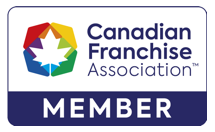Until 2012, it was generally understood that the residence of a trust was based on the residence of its trustees. However, in Fundy Settlement v. Canada, the test for determining a trust’s residence shifted to where the central management and control of the trust property is exercised.
Fundy Settlement v Canada
Fundy Settlement revolved around the tax residency of two trusts, the Fundy Settlement and the Summersby Settlement, which were administered by St. Michael Trust Corp., a Barbados-based trustee. The trusts disposed of shares in Ontario corporations and had significant withholding tax withheld by the Canadian government, totaling approximately $152 million. St. Michael sought the return of this amount, arguing that the trusts were exempt from Canadian capital gains tax due to their residency in Barbados, based on a tax treaty between Canada and Barbados.
The Minister of National Revenue contended that the trusts were resident in Canada, asserting that the central management and control was exercised by the beneficiaries, who lived in Canada. The Tax Court of Canada, and later the Federal Court of Appeal, upheld this view, leading St. Michael to appeal to the Supreme Court of Canada.
The Supreme Court affirmed that the residence of a trust is determined by where its central management and control actually takes place, drawing an analogy to corporate residency principles. They emphasized that while a trust is not a legal person, it is treated as such for tax purposes under the Income Tax Act, meaning the residence is not automatically that of the trustee.
Key principles established regarding the residency of trusts include:
- Central Management and Control: Similar to corporations, a trust’s residency is determined by where its central management and control is exercised. If the beneficiaries control the trust’s operations from Canada, the trust is considered resident there.
- Legal Personality: Although trusts lack independent legal existence at common law, they are treated as individuals under tax law, affecting how residency is assessed.
- Role of the Trustee: The residence of the trustee does not automatically dictate the residency of the trust. The trust may be resident in a different jurisdiction if its management occurs elsewhere.
- Consistency and Fairness: The Supreme Court highlighted the importance of a consistent approach to tax law, advocating for similar residency tests for trusts and corporations to promote fairness and predictability.
In summary, the Court ruled that the trusts were residents of Canada based on where their central management and control was exercised, dismissing St. Michael’s appeal and affirming the withholding tax obligation.
Darmos Family Trust v Minister of Finance
This issue was revisited in the case of Theodoros Darmos Family Trust v. Minister of Finance.
The case similarly deals with two family trusts, the Ted Trust and the Darmos Trust, and centers on whether these trusts should be considered residents of Alberta or Ontario for taxation purposes during 2006 and 2007. The trusts filed taxes in Alberta, but the Ontario Minister of Finance reassessed them as Ontario residents, which would lead to significant differences in taxes owed. The trusts held proceeds from the sale of a business to Bell Canada, and their trustees included a mixture of individuals and companies based in both Ontario and Alberta.
The central issue at trial was the location of “central management and control” of the trusts—whether the decisions were primarily made in Alberta or Ontario. The trusts argued that they were managed in Alberta, while the Minister argued that true control remained in Ontario, despite the appointment of Alberta-based trustees.
It was reconfirmed that the central management and control of the trust, as discussed in Fundy Settlement v. Canada and applied in the Darmos Family Trust case, refers to where the key decisions about the management of the trust’s assets are made.
In the case of a trust, as with a corporation, its “residence” for tax purposes is determined by where its central management and control take place, rather than where the trustees are physically located.
In the Darmos Family Trust case, the evidence pointed to the fact that while some trustees were located in Alberta, the real decision-making regarding the trust’s management took place in Ontario. The trustees in Alberta were viewed as performing more administrative functions, while the central control was effectively exercised by Mr. Darmos and his professional advisors, including legal and financial consultants based in Ontario. This conclusion aligned with the principle established in Fundy Settlement that a trust resides where its real business—meaning its management and control—are conducted.
Therefore, despite the formal appointment of trustees in Alberta, the trust was found to be resident in Ontario due to the locus of its central management and control.
If you require assistance with trust related planning or administration, contact our Estate Planning Lawyers and we would be happy to help.
At Mills & Mills LLP, our lawyers regularly help clients with a wide range of legal matters including business law, real estate law, estate law, employment law, health law, and tax law. For over 140 years, we have earned a reputation amongst our peers and clients for quality of service and breadth of knowledge. Contact us online or at (416) 863-0125. The material provided through the Mills & Mills LLP website is for general information purposes only. It is not intended to provide legal advice or opinions of any kind.

 2 St Clair Ave West
2 St Clair Ave West


